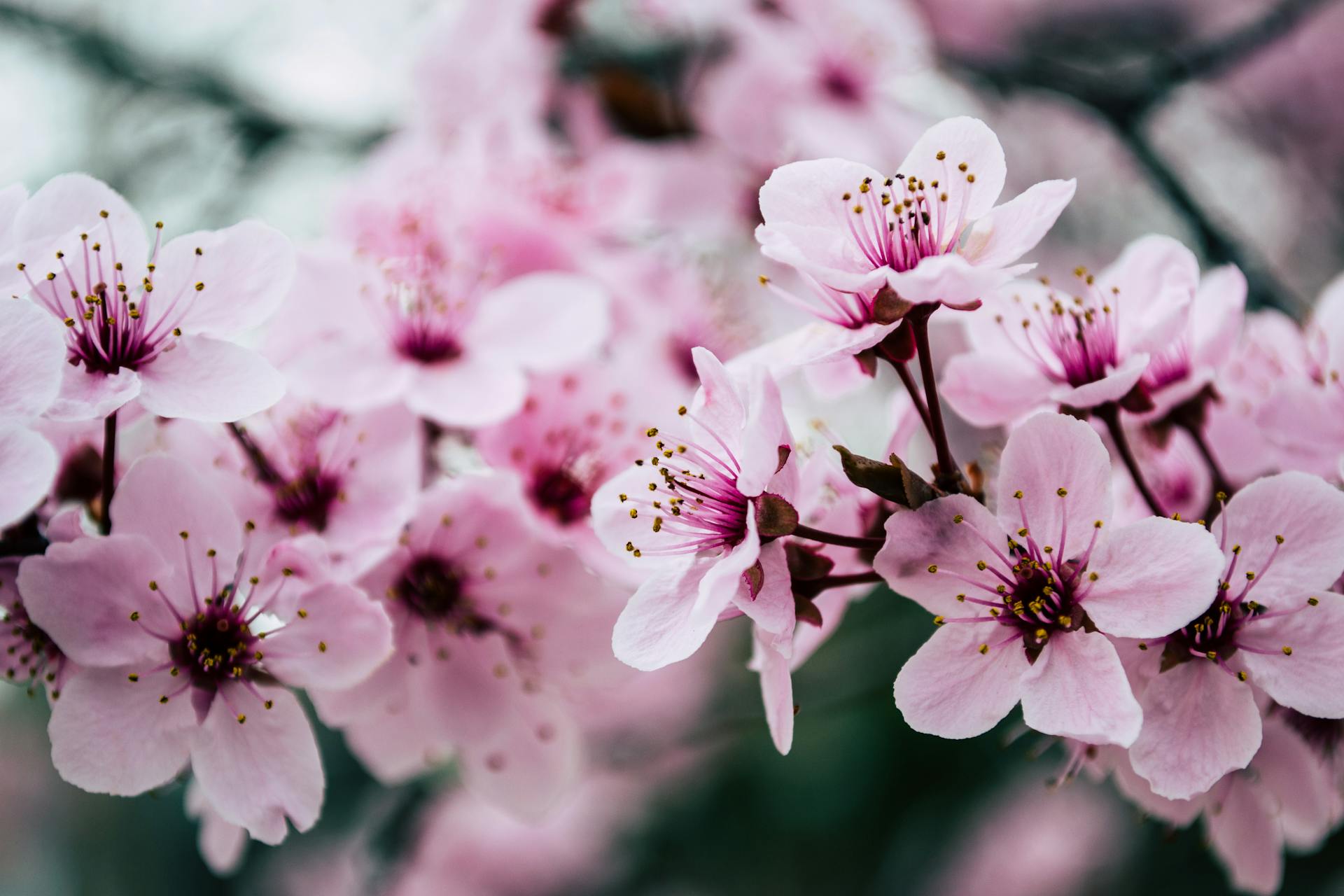
According to most dental experts, the natural color of healthy teeth is a light yellow-gray hue. Although they may appear white in person, this off-white shade is more indicative of a healthy set of teeth. Teeth may become darker or discolored due to an excess of food and drink stains, smoking, or certain medications. Ultimately, the healthier you are and the better care you take of your teeth by brushing twice daily and flossing once a day will result in brighter and whiter looking teeth with time. If discoloration persists despite your best efforts at proper oral hygiene habits, consider discussing it with your dentist for possible solutions such as professional whitening or veneers!
Expand your knowledge: Teeth White
What colour should gums appear?
Gums should generally appear a healthy shade of pink. However, the exact hue may vary from individual to individual, so there's no one "right" color that gums must appear! Generally speaking though, gums should not appear red or pale colored; these may be signs of an underlying issue such as gum disease or malnutrition. Healthy gums are firm and resiliant but they shouldn't look overly white either. If you're concerned about your gums appearing "off", it is always recommended that you speak to your dentist as they can help advise on the best treatment plan and answer any specific questions related to the health of your gums.
What natural shade of enamel is normal for teeth?
We’ve all seen the teeth whitening advertisements, promising a brighter, whiter smile that will make us look years younger. But did you know that there is a natural shade of enamel that is considered normal for most people? Depending on your individual genetics and lifestyle choices, this color can vary from person to person.
Generally speaking, the average color of a healthy set of natural teeth is a light yellow-grayish hue. Someone with darker pigmented ethnicity may find that their tooth color may be darker than others depending on their genetics and lifestyle habits. For example, smoking or drinking coffee could potentially impact the overall tone of your teeth over time as staining can occur due to these habits as well as other dietary choices such as excess consumption of wine or dark colored sodas contributing to discoloration. In addition, people who take certain medications such as tetracycline antibiotics may experience discoloration in which case the tooth structure may be indented with paper-thin white strips or larger blotched areas where the medication has worked its way into the enamel overtime.
Those individuals without any kind of staining or hormonal changes leading to discoloration should expect their natural enamel shade to fall into shades ranging anywhere from slightly creamy yellowish hues all the way up through mildly whitened tones which would then be classified above average when it comes to tooth colors naturally found in humans!
Overall it’s important to understand that every person has unique oral needs based on varying oral habits along with genetic traits dictated through our bloodlines. With so much variation in colors we can safely say when it comes down acceptable range for natural teeth colors–it’s quite wide!
A different take: Natural Color
Can the colour of teeth be affected by age?
Age can absolutely affect the colour of teeth, leading to a grayer or yellower hue. However, depending on the person's oral hygiene habits, it can be difficult or impossible to tell how old someone is just from their teeth.
Your dental health is closely connected with age, so as we get older our teeth may start to show discoloration and staining due to years of eating and drinking different foods and beverages that contain tannins or acids that leave behind residue in your enamel. Plaque buildup caused by inadequate brushing can also accumulate over time and cause discoloration along with smoking habits.
Other factors like certain medications such as antihistamines can also cause yellowing of teeth due lack of enough saliva produced while taking these medications thus allowing plaque and tartar buildup which result in staining on the surface of your tooth enamel. Teeth grinding may additionally contribute more wear onto surfaces causing different type stains.
This could be especially true if you’ve never replaced missing teeth – even if they’re hidden way back in your mouth - because they raise the possibility of orbital decay which could make all the other healthy teeth take on a discolored aspect due decay seeping out onto them all around it like hubcap effect! On top of this when our gums recede due unhealthy gum tissue slipping down low exposing root surfaces become susceptible for easy absorption for darker colors/stains/debris from meaty/winey type feast going on around them too making things appear darker or not so pearly white anymore! And lastly an additional contributor could stem from having excessive coffee-tea stain contacts happening regularly without proper cleansing rituals being adhered too; again leading very easily towards unwanted yellowing!.
For many people though age isn't always necessarily an indicator for their oral health status; rather their current brushing practices are usually much more illuminating when considering your overall tooth coloration over time! To prevent extensive dampening aging effects regarding tooth discoloration it's always best practice brush twice daily (session length = not less than 2 minutes), employ use flossing tools often times throughout day & consider seeing family dentist at least twice yearly (possibly 3x /yr) while avoiding dark food/drink contact direct with front-filed pearly whites whenever possible (for example: holding underneath tongue will protect against such undesirable stainings)!
If this caught your attention, see: Why Are My Teeth Not Whitening?
What hue does healthy tooth enamel usually range from?
Healthy tooth enamel usually ranges from a light yellow hue to a translucent greyish-white color. While the shade will vary from person to person, having healthy teeth generally gives them an opaque, glossy appearance which is slightly brighter than the surrounding gums.
The color of tooth enamel largely depends on its mineral content and structure. The white of healthy tooth enamel is derived from calcium in combination with small amounts of other minerals such as phosphorus and magnesium. The glossiness of healthy tooth surfaces comes from the orderly arrangement or crystalline structure of its mineral composition which also causes it to be more reflective than other parts of our mouth like gums and the tongue tissue.
If your teeth appear dull or have yellow patches, this could be due to stained areas caused by substances like coffee, tea, or nicotine found in cigarettes and tobacco products. In some cases, poor oral hygiene resulting in plaque build-up can also cause discoloration which can range various shades including brown and even black which indicates serious decay due to bacteria present in cavities that isn’t being cleaned properly at home between dental checkups. If this is happening to you then make sure you visit your dentist for regular deep cleanings and exams so you can keep your smile bright, white, and healthy!
For more insights, see: Teeth Yellow
How can a person tell if their teeth are discoloured?
Discoloured teeth can be a sign of poor dental hygiene or an underlying health condition. To determine if your teeth are discoloured, one should first look for any yellowing or darkening of the enamel. It may also be helpful to compare the colour of your teeth to pictures of healthy, whiter teeth in order to get an accurate comparison. In addition to visual cues, staining can also cause sensitivity and pain in the affected areas which may indicate discolouration. Furthermore, bad breath and a gritty feel when you rub your tongue along the surface of your teeth is indicative of plaque build-up which often causes discolouration due to bacteria eating away at the enamel. If any signs or symptoms are present it is advised that you contact a dentist immediately as they will be able to offer advice on how best to proceed with taking care of your teeth and potentially restoring their natural whiteness!
Does the diet affect the shade of the teeth?
Yes, certain aspects of a person's diet can affect the shade of their teeth. While some foods like coffee and tea can discolor the teeth over time, other foods that are full of natural colouring agents such as blueberries or beets may actually help whiten or brighten your teeth temporarily. Eating crunchy fruits and vegetables like apples, carrots, celery etc., that have abrasive tendencies may also clean away surface stains on the enamel- making them appear whiter. Additionally, foods rich in calcium and phosphorus such as dairy products are essential for keeping teeth strong & healthy while helping maintain its white colour too!
Sources
- https://apps.apple.com/us/app/color-by-number-coloring-games/id1317978215
- https://www.dictionary.com/browse/can
- https://coolors.co/palettes
- https://coolors.co/
- https://www.merriam-webster.com/thesaurus/can
- https://www.merriam-webster.com/dictionary/color
- https://www.color.com/
- https://www.merriam-webster.com/dictionary/can
- https://html-color.codes/
- https://en.m.wikipedia.org/wiki/Color
- https://www.w3schools.com/colors/colors_picker.asp
- https://en.m.wikipedia.org/wiki/List_of_colors:_A%E2%80%93F
- https://www.britannica.com/dictionary/can
- https://en.wikipedia.org/wiki/Can_(band)
- https://color.method.ac/
Featured Images: pexels.com


